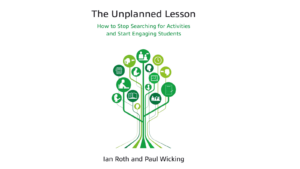by Alistair Elliott
Life in Vietnam:
As with many developing countries, Vietnam is continuing to make a significant push to improve its English language skills. From the early 1990s, the prevailing theory of teaching English has “slanted towards the view that places the learner at a focal point with the teacher seen in the role of a facilitator who provides creative contexts for language learning”. P10
The Current Situation and Issues of the Teaching of English in Vietnam by Hoang Van Van (pdf) Then, following Government Decree number 14/2001 TC-TTg “The Ministry of Education and Training (MOET) organized the design of the curriculum and the writing of new textbooks for all school subjects”. P10 Ibid. Thereafter by early 2008, there was “…one set of English textbooks for lower secondary schools and two sets of English textbooks for upper secondary schools…” p11 Ibid. Subsequently, English Education policy has further evolved via the new policy of “One curriculum, many sets of textbooks”. This gives more authority and responsibility to the teacher to choose from an increasingly wider selection of textbooks, than in the past. https://vietnamnews.vn/society/466448/teachers-given-autonomy-to-select-sets-of-textbooks.html Into this has pitched National Geographic Learning’s Life series. It is this which I will be commenting on.
Life on the outside
I have at hand, the following National Geographic material; National Geographic Life A1. This has been given to me to teach at grade 6 (lower level ability). I also have Nat Geo Life A1-A2. This is for my use at grade 6 and 7 (higher level ability). And finally, I have Nat Geo Life A2-B1. I am to use this to teach grades 8 and 9 (higher level ability). They were all written by Helen Stephenson, Paul Dummett and John Hughes, with one of them being the lead writer of each book. The covers of the book themselves offer epic photographs of iconic Vietnam; specifically, Ha Long Bay, Sapa Valley and Ban Gioc Waterfalls. In the top right-hand corner are the words Vietnam edition. So, it’s visually good stuff with the appearance of a significant connection to Vietnam. However, are they usable for the purposes of teaching English? Do they help the teacher to be a facilitator, and support us to provide creative and communicative classes? And are they as Vietnamese focused as the front cover suggests. Let’s see.
Life Blurb
The National Geographic Life books have this to say about themselves. “National Geographic learning, a Cengage Learning Company, has a mission to bring the world to the classroom and the classroom to life. With our English language program, students learn about their world by experiencing it. Through our partnerships with National Geographic and TED Talks, they develop the language and skills they need to be successful global citizens and leaders”.
Penultimate page Life books. (No page number) In addition, there is also a bespoke Vietnam Life website which has this to say; “As part of its goal to increase the general proficiency of all students in Vietnam, the Ministry of Education and Training (MOET) has approved to use National Geographic Learning’s Life series as the main English textbook across 26 universities*…Life was selected due to its strong focus on 21st century skills, its engaging and global topics, and comprehensive integration of technology”. http://www.cengageasia.com/VietnamLife
Life support
Upon receiving the Life books, I was also provided with Life software. The software “…is an interactive whiteboard application that is intended for classrooms using the Life … Student’s Book”. There are five aims for the software, amongst which include reducing teacher preparation time, increasing the learner’s attention span and saving time during classes. I did think that this was part of the job of the teacher, but, well, let’s soldier on.
Upon opening the Life software, so reveals the front cover of every unit in the book, a resources button and a toolbar at the bottom. Within each unit front cover page, is every page of that unit. Within the resources are all the audios from CD1 and CD2, and all the videos for all the units. The toolbar allows you to highlight sections of the text, undo, erase or clear any text interaction, annotate, customize the page and even create tests or quizzes in the add task feature. This is for every page of every unit. It is quite the support. So, to support the support, Nat Geo Life has also written an e-manual. This runs to 34 pages.
As well as this, there is also the aforementioned cengageasia website
http://www.cengageasia.com/VietnamLife. It offers things like lesson plans, communicative worksheets and extra practice activities, but perhaps it’s a work in progress as it seems a little bit incomplete. There is also a Nat Geo Learning Vietnam facebook page. There are seminars in Vietnam and across Asia. There are webinars on the internet and therefore, across the world.
Life in Bloom
Underpinning the enterprise is Bloom’s taxonomy. This is “a hierarchical ordering of cognitive skills that can help teachers teach and students learn”.There is a sextet of a rising order of thinking skills.
These are:
1/ knowledge,
2/ comprehension,
3/ application,
4/ analysis,
5/ synthesis, and finally
6/ evaluation.
Within each cognitive group are the power verbs used to unpack each cognitive level. Google ‘Bloom’s taxonomy images’ to see for yourself what they are and how many. I’ve counted as many as 144 in one image. In fact, Google Bloom’s taxonomy, and you are going to get something like 3,690,000 results in 0.36 seconds. Good luck with that. Perhaps for more fun, watch Bloom’s Taxonomy in action according to Seinfeld.
Life on the inside
et us now look on the inside of the physical books. The books I’ve referenced, all run to 174 pages. On each, there are colourful and original photographs and graphics, mistakes withstanding. All the unit titles are laid out on contents pages, with a brief overview of the skills covered in that unit. Each unit has an introduction page and begins with the same four questions being asked. Presumably, this is to activate the schemata of the unit. Thereafter, each unit is divided into six sub-sections, with each sub-section given its own title. Within each sub-section there are several parts, each relating to the various skills mentioned in the contents page. Every unit ends with a full-page review. Every unit has its own video. The final few pages contain extra communicative activities and grammar summaries for each unit.
Life in use
Let’s state the title again clearly, these are my first impressions. I’ve been using these books for about a month, so I’m not able to be too critical. In fact, I don’t want to be critical at all. However, I think it is entirely appropriate to offer some initial impressions.
So, I guess the main thing to say is that it’s not exactly Vietnamese focused. The cover photographs and title of the Vietnam edition clearly indicate where we are, but this is not supported within. I randomly picked-up the A1-B2 and looked through all the pages to find any references to Vietnam, and none could I find. There are Asian references on pages 24, 34, 44 and 59. There are Asian faces on pages 52, 120 and 126. Otherwise, it’s a bit thin to connect this book to Vietnam. I’m not suggesting that every page, or unit should have Vietnam or Asian content, but Life Vietnam edition seemed to have missed some obvious opportunities.
At unit 3d page 40, The City of Atlanta, could it have been about the city of Da Nang? At unit 5a page 59 Famous for Food, there is a conversation and listening activity about a Thai dish called Satay. People, this screams to be a listening activity about the national dish of Vietnam, Phở (fur)!! At unit 11d page 136 A Holiday in South America. This must be A Holiday in Asia, with a focus on Vietnam if possible. It would be up to the teacher to find the critical thinking slant for material related to the student’s own country, but the students would be thrilled at a little content being about themselves. I’d suggest that a little local attention would go a long way to keep the students interested in what is often some difficult content.
And there is an awful lot of content which is the second thing to say. Virtually every page is plastered with small type English. It’s often compact, with inherently new vocabulary, new information and new concepts to think about. All of which will pile stress and anxiety on the student and slow the class down if done verbatim. This, of course, would not be the correct way to do things, and is where the interactive support should be learned and used. However, are the students there to learn English, or have they accidentally been bumped into a 21st Century Western Culture course? Sure, I appreciate that new thinking is required in our schools, but is this achieved by talking about Cheese Rolling (Life A2-B1, 2f, p30) or X-Ray photography (Life A2-B1, 7a, p82)?
More care needs to be taken with the content. Much better is Life A2-B1 unit 1b, p12 The Secrets of a Long Life. This is about how long people in Okinawa live for? It’s interesting, Asian relatable and is a relatively clean, EFL-looking page. This will (and has already) engaged the students. That said, I do like the Life A1 book for the alleged lower-level learners. The content is less esoteric. It looks a bit more like an EFL book and above all the layout is less cramped and dense than the other higher-level books. As an EFL teacher, I can access this book, use it, work it. And if I can do that, so my students will also be able to access it, use it, work it too.
Life thoughts
We’ll see where Life takes us over the next 3 months. Given that these books might not appropriate for my students and, in fact, all but two of my classes don’t have the book anyway, I’m going to have to work hard to get something out of them. I’ll work hard to understand more about Bloom’s taxonomy. I’ll try and get some appropriate videos into the class and I’ll get my students to critically think where possible, both of which, in any event, I already do anyway.
There’s lots to like about Life, and I certainly appreciate National Geographic’s push into EFL. They must have a huge back-catalogue of material from their television channel and magazine, and it makes sense to adapt it to the ever-increasing market that is EFL in Asia. That said, I am here to teach English not to deliver culture lessons from around the world. I also have teaching skills.
So, whereas it is thoughtful of National Geographic to try to reduce the perceived teacher burdens of lesson planning, generate class enthusiasm and reduce in-class time-wasting, this rather is the name of the game for the EFL teacher. And though this is the game and it tasks us constantly, we can successfully, enthusiastically and happily do with the right support. I’ll work with you. I really hope you are working with us too.
PS – (Mid) Life crisis
So, it seems that I have been given university appropriate material to teach for the lower secondary level. Hmmm. Interesting. Of course, I emailed my DoS about this and she said that the decision was taken by ‘the team’ before she arrived. This is true. And what else was I expecting?




